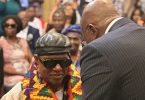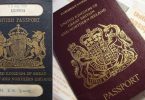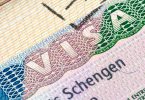Visitors to the Hawaiian Islands spent a total of $13.35 billion in the first three quarters of 2019, which is relatively similar (-0.1%) to the same period in 2018, according to preliminary statistics released today by the Hawaii Tourism Authority (HTA). Visitor spending includes lodging, interisland airfare, shopping, food, car rental and other expenses while in Hawaii.
Tourism dollars from the Transient Accommodations Tax (TAT) helped to fund dozens of community events statewide during the first three quarters of 2019, including the Honolulu Festival, Pan-Pacific Festival, Korean Festival, Okinawan Festival, Prince Lot Hula Festival, Merrie Monarch Festival, Maui Film Festival, and Koloa Plantation Days.
Total Hawaii visitor spending during the first three quarters of 2019 increased from U.S. West (+5.3% to $5.18 billion) and U.S. East (+2.5% to $3.60 billion), but declined from Canada (-2.6% to $783.9 million) and All Other International Markets (-13.6% to $2.15 billion) compared to a year ago. Visitor spending from Japan of $1.61 billion was comparable to a year ago.
On a statewide level, average daily visitor spending was down (-2.9% to $195 per person) compared to the first three quarters of 2018. Visitors from U.S. East (+1.2% to $212 per person) and Canada (+0.6% to $167 per person) spent slightly more per day, while visitors from U.S. West (-1.3% to $174 per person), Japan (-2.0% to $235 per person) and All Other International Markets (-11.5% to $218 per person) spent less.
Total Hawaii visitor arrivals increased 5.5 percent to 7,858,876 in the first three quarters of 2019, supported by growth in arrivals from air service (+5.4% to 7,764,441) and cruise ships (+23.6% to 94,435). Visitor arrivals by air increased from U.S. West (+10.5% to 3,460,697), U.S. East (+4.0% to 1,752,473) and Japan (+3.3% to 1,152,900), but declined from Canada (-1.5% to 387,962) and from All Other International Markets (-3.2% to 1,010,409). Total visitor days1 increased 2.9 percent. The statewide average daily census2, or the number of visitors on any given day was 251,210, up 2.9 percent compared to a year ago.
Among the four larger islands, Oahu recorded increases in visitor spending (+2.1% to $6.18 billion) and visitor arrivals (+5.9% to 4,690,139), but daily spending was down (-3.0%) in the first three quarters of 2019 compared to the same period from a year ago. On Maui, visitor spending increased slightly (+0.8% to $3.85 billion) due to growth in visitor arrivals (+4.7% to 2,321,871) but lower daily spending (-1.9%). The island of Hawaii reported declines in visitor spending (-4.5% to $1.72 billion) and daily spending (-4.1%), but visitor arrivals increased (+1.7% to 1,335,330). Kauai saw decreases in visitor spending (-6.3% to $1.45 billion), daily spending (-3.3%) and visitor arrivals (-1.7% to 1,043,309).
A total of 10,230,151 trans-Pacific air seats serviced the Hawaiian Islands in the first three quarters of 2019, up 2.3 percent from a year ago. Air seat capacity increased from U.S. East (+5.4%), U.S. West (+4.6%) and Canada (+4.0%), offsetting fewer seats from Other Asia Markets (-13.6%), Oceania (-6.0%) and Japan (-1.8%).
September 2019 Visitor Results
For the month of September, total visitor spending statewide declined 3.9 percent to $1.25 billion compared to a year ago. Visitor spending increased from U.S. West (+2.2% to $468.5 million), but declined from U.S. East (-0.8% to $295.4 million), Japan (-2.3% to $188.0 million), Canada (-2.7% to $40.5 million) and All Other International Markets (-18.4% to $243.7 million).
Statewide average daily spending by visitors decreased to $199 per person (-4.9%) in September due to lower spending from most markets except for U.S. East (+5.7%).
Total visitor arrivals increased 3.5 percent to 741,304 visitors in September year-over-year, boosted by growth in arrivals from air service (+2.4% to 723,341 visitors) and cruise ships (+86.5% to 17,963 visitors). Total visitor days increased 1.0 percent. The average daily census was 208,428, up 1.0 percent compared to a year ago.
In September, visitor arrivals from air service increased from U.S. West (+5.5% to 308,921) and Japan (+7.3% to 137,659), but declined from U.S. East (-1.7% to 136,981), Canada (-0.5% to 21,988) and All Other International Markets (-4.9% to 117,790) compared to a year ago.
For the month of September, visitor spending on Oahu declined (-4.8% to $610.1 million) due to lower daily spending (-6.6%), which offset growth in visitor arrivals (+2.3% to 463,963). Visitor spending on Maui rose slightly (+0.7% to $341.1 million) with both daily spending (+2.3%) and visitor arrivals increasing (+0.6% to 212,114). The island of Hawaii saw increases in visitor spending (+2.9% to $146.2 million) and visitor arrivals (+10.4% to 111,809), but lower daily spending (-2.5%). Kauai recorded declines in visitor spending (-17.6% to $128.6 million), daily spending (-11.4%) and visitor arrivals (-6.2% to 94,332).
Other Highlights:
U.S. West: In the first three quarters of 2019, visitor arrivals rose from the Pacific (+11.2%) and Mountain (+10.6%) regions versus the same period last year. Daily visitor spending dropped to $174 per person (-1.3%) as a result of decreases in transportation, food and beverage, and entertainment and recreation, while spending on lodging and shopping was similar to last year.
In September, visitor arrivals increased from the Mountain region (+8.0%) year-over-year, with growth in visitors from Arizona (+17.2%), Nevada (+5.6%) and Colorado (+5.1%). Arrivals also rose from the Pacific region (+5.1%) with more visitors from California (+7.2%).
U.S. East: In the first three quarters of 2019, visitor arrivals increased from every region. Daily visitor spending rose to $212 per person (+1.2%). Spending increased for lodging and food and beverage expenses. However, transportation expenditures declined as visitors spent less on interisland airfare due to fewer multi-island trips (-2.0%).
In September, visitor arrivals increased from the West South Central (+1.9%) and New England (+1.3%) regions, but declined from the South Atlantic (-5.1%), East South Central (-3.1%), West North Central (-2.4%), Mid Atlantic (-2.2%) and East North Central (-1.9%) regions compared to a year ago.
Japan: In the first three quarters of 2019, more visitors stayed in timeshares (+10.9%), with friends and relatives (+11.5%), in condominiums (+3.0%) and hotels (+2.9%) compared to a year ago. Average daily visitor spending decreased to $235 per person (-2.0%), primarily due to lower lodging and shopping expenses.
In September, more visitors went to multiple islands (+14.0%) year-over-year, marking the third consecutive month of growth in multiple-island visitation compared to the same timeframe a year ago.
Canada: In the first three quarters of 2019, fewer visitors stayed in condominiums (-7.3%), timeshares (-4.4%) and hotels (-3.0%), while more visitors stayed with friends and relatives (+13.3%) and in rental homes (+2.6%) compared to a year ago. Average daily visitor spending rose slightly to $167 per person (+0.6%). Lodging expenses increased, but shopping expenses declined versus a year ago.
In September, fewer visitors purchased packaged trips (-29.8%), while more visitors made their own travel arrangements (+11.0%) compared to a year ago.
[1] Aggregate number of days stayed by all visitors.
[2] Average daily census is the average number of visitors present on a single day























